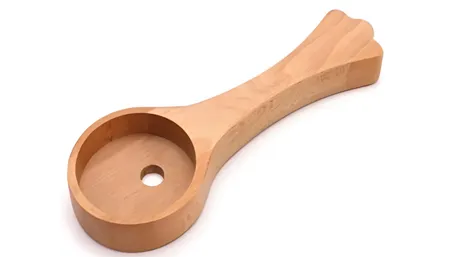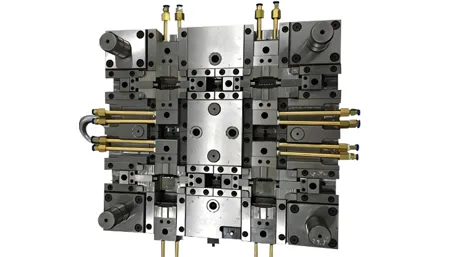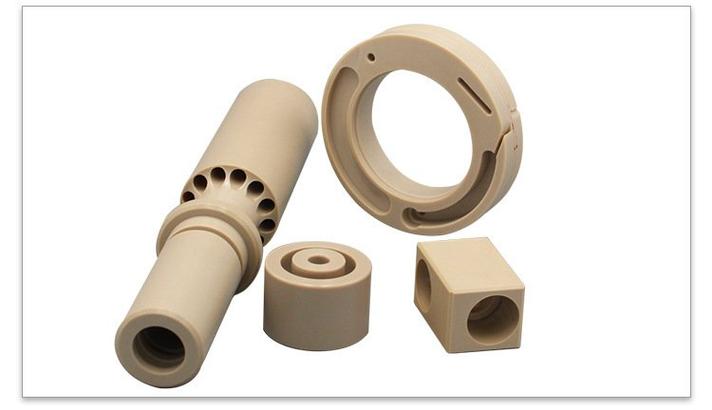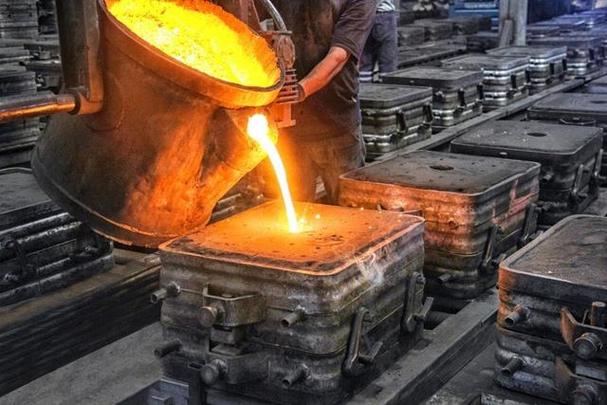Stamping technology is a widely used process in the field of metal processing, which is used to obtain parts of the desired shape and size by applying pressure to sheet metal through a die to cause plastic deformation or separation. Stamping technology can be subdivided into various types according to different classification criteria.
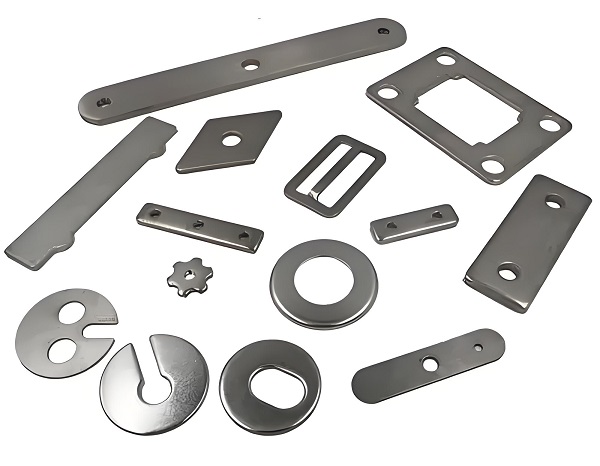
1. Types of stamping technology
1.1 Cutting
Stamping is the most basic type of stamping technology and the most widely used one. It mainly shears the metal sheet through the punch and concave die of the mold, so that the sheet is separated along a certain contour line, thus obtaining the desired shape of the part. Punching technology has the advantages of high productivity, high dimensional accuracy and high material utilization.
1.2 Bending
Bending is a stamping technology that bends the metal sheet into a certain angle or shape under pressure in the mold. It is mainly used to produce a variety of curved parts, such as U-shaped parts, V-shaped parts and so on. Bending technology can realize different angles and shapes of bending by changing the shape and size of the mold.
1.3 Drawing
Drawing is a stamping technology that stretches sheet metal into the required shape and size through a mold. It is mainly used to produce various kinds of cup shaped parts, cylinder shaped parts, etc.. Stretching technology requires accurate mold design and reasonable control of process parameters to ensure the quality and dimensional accuracy of the stretched parts.
1.4 Localized forming
Localized forming is a stamping technology that performs plastic deformation in a local area of the metal sheet to form the desired shape and features. It includes various types such as embossing, stamping and flanging. Localized forming techniques can be achieved by specific shapes and movements of the die to add decorative or functional features to the sheet metal.
1.5 Composite Stamping
Composite stamping is a technology that completes multiple stamping processes by combining multiple processes on the same stamping equipment. It can greatly improve production efficiency, reduce the number of molds and die change time, reduce costs. Composite stamping technology requires precise mold design and complex control system to achieve synchronization and coordination of multiple processes.
2.Safety Protection
Personal protective equipment:
Operators must wear appropriate personal protective equipment, including helmets, protective eyewear, earplugs, protective gloves, and non-slip shoes to protect against splash, noise, and mechanical injury.
Jewelry such as ties, necklaces, bracelets, etc., that can easily become entangled in the machine are prohibited.
Safety device inspection:
Before operation, the safety guards of the stamping equipment (such as two-hand starting devices, photoelectric protection devices, emergency stop buttons, etc.) must be carefully checked to see if they are intact and effective.
Ensure that key components such as clutches, brakes, etc. are operating normally and are free from faults and abnormalities.
Equipment cleaning and maintenance:
Keep the work area and equipment clean to avoid debris and oil from interfering with the equipment and operation.
Regularly maintain and service the equipment to ensure that the components are in good condition.
3. Material Preparation and Inspection
Material quality:
Ensure that the materials used meet the process requirements and are free from defects such as cracks, inclusions, rust and corrosion.
Check whether the size, thickness and other parameters of the material meet the process standards.
Material Placement:
Place the materials neatly in the designated location to avoid material confusion leading to misoperation or safety accidents.
Use special tools or equipment to load and unload materials, avoid direct hand contact with materials or molds.
4.Process Operation
Mold installation and adjustment:
Install and adjust the molds in strict accordance with the process requirements to ensure that the molds are accurately positioned and securely fixed.
When adjusting the mold, it is necessary to stop the machine and cut off the power supply to prevent injury caused by accidental startup.
Stamping operation:
Follow the correct operation sequence and steps for stamping to ensure that each action meets the process requirements.
During the stamping process, always pay attention to the operation status of the equipment and the quality of the product, and stop the machine immediately for inspection if any abnormality is found.
Workpiece removal and inspection:
Use special tools or equipment to take out the stamped parts, avoid reaching directly into the mold to take out the parts.
Check the appearance of the stamped parts to ensure that there are no cracks, deformation and other defects.
5. Emergency treatment
Accident prevention:
Make a detailed emergency plan for accidents, including countermeasures for mechanical failures, material abnormalities, personal injuries and other situations.
Conduct regular safety training for operators to improve emergency handling ability and safety awareness.
Accident Handling:
Once a safety accident occurs, immediately stop the machine and cut off the power supply, protect the scene and report to the relevant departments.
Provide timely treatment to the injured and actively cooperate with the accident investigation and treatment.
6.Other Precautions
Operation discipline:
Strictly abide by the operating procedures and labor discipline, no unauthorized changes in process parameters or operating procedures.
Prohibit smoking, eating, drinking or activities not related to work during operation.
Handover management:
Strict shift handover system is implemented to ensure that the information on equipment status, process parameters and product quality of the previous shift is accurately transmitted.
The person who takes over the shift should check the equipment, molds and product quality carefully to ensure that there is no error before taking over the shift.
Environmental protection:
Waste materials and wastes generated in the production process should be classified, collected and disposed of in accordance with environmental protection requirements.
Regularly clean and sterilize the equipment and working environment to keep it hygienic and tidy.
In short, the precautions for the operation of stamping technology involve many aspects, which need to be strictly observed and implemented by the operators. Only in this way can we ensure the safety, efficiency and product quality of the production process.
Stamping Technology FAQ
1. What is stamping technology?
Answer: Stamping technology is a process method that applies pressure to a metal sheet by means of a die to produce plastic deformation or separation, so as to obtain a part of the desired shape and size. It is widely used in automotive, home appliance, electronics, aerospace and other industries, and is one of the key technologies to realize large-scale, high-efficiency and high-precision parts production.
2. What are the main advantages of stamping technology?
Answer: The main advantages of stamping technology include:
High efficiency: the stamping process can usually be automated, with high production efficiency, suitable for mass production.
High precision: Parts with high dimensional and shape accuracy can be obtained through precision molds and stamping equipment.
High material utilization: The stamping process has relatively low scrap and high material utilization, which helps to reduce costs.
Suitable for complex shapes: the flexibility of molds makes stamping technology capable of producing parts of various complex shapes.
3. How to improve the dimensional accuracy of stamped parts?
Answer: The main measures to improve the dimensional accuracy of stamped parts include:
Optimize die design: Reasonable design of die structure to ensure the guiding accuracy and manufacturing accuracy of the die.
Selection of high-quality materials: Selection of high-strength, high wear-resistant mold materials to improve the service life and precision of the mold.
Strengthen mold maintenance: Regularly sharpen, inspect and repair the mold to keep it in good condition.
Control the stamping process: Reasonably set the stamping parameters, such as pressure, speed, lubrication, etc., to ensure the stability and consistency of the stamping process.


